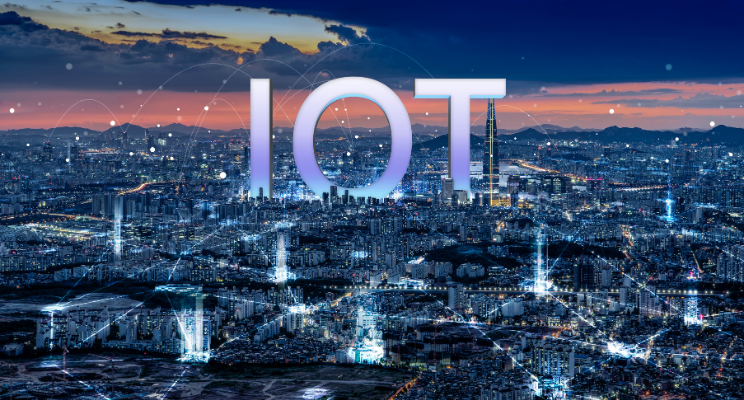Physical Address
304 North Cardinal St.
Dorchester Center, MA 02124
Physical Address
304 North Cardinal St.
Dorchester Center, MA 02124

The digital revolution is accelerating, and at its core lies the seamless integration of 5G and the Internet of Things (IoT). These technologies are not only enhancing connectivity; they are redefining how industries function, how cities operate, and how people interact with the digital world. Ultra-fast data transmission combined with real-time automation is opening doors to once unimaginable opportunities. This transformation is happening right now, powered by the dynamic convergence of 5G and IoT.
5G technology offers more than speed enhancements for mobile networks. It establishes a strong foundation for IoT to operate at its highest potential, thanks to its ultra-low latency, high capacity, and reliable connectivity. The true promise of IoT lies in its ability to connect billions of devices and enable them to communicate in real time. A robust and scalable network is essential for efficient connectivity. With 5G, IoT systems gain the agility to automate processes, enable predictive analytics, and streamline communication across various industries.
5G delivers unparalleled speeds and low latency while supporting a massive number of connected devices. This makes it the ideal backbone for IoT applications in homes, cities, and enterprises. Unlike previous network generations, 5G can manage dense environments where device saturation is high, such as in manufacturing plants or urban centers. According to GSMA, 5G-driven IoT solutions have the potential to significantly improve operational efficiency and reduce costs across multiple industries.
The agriculture sector is one such beneficiary. IoT sensors linked to 5G networks allow farmers to monitor soil moisture, crop health, and water levels in real time. These insights lead to better resource allocation, reduced waste, and increased sustainability. In the retail world, smart inventory systems and automated checkouts are minimizing human intervention while optimizing inventory control.
IoT applications generate a continuous flow of data, and 5G ensures that this data is transmitted instantaneously. In healthcare, wearable medical devices send real-time health updates to practitioners, allowing for quicker diagnostics and remote monitoring. Smart manufacturing systems use 5G-connected sensors to monitor machinery, prevent breakdowns, and maintain productivity levels.
The transportation sector is also seeing advancements with connected vehicles that share traffic data, road hazards, and navigation information in real time. According to ITU, the success of smart infrastructure and automation heavily depends on the real-time capabilities that 5G provides.
Emergency services benefit greatly from this connectivity. Ambulances connected to 5G can send critical patient information to hospitals before arrival, allowing medical teams to prepare accordingly. Smart disaster management systems use IoT devices to detect incidents and alert emergency responders more efficiently.
The integration of 5G and IoT is central to the development of smart cities and intelligent homes. Urban infrastructure is being transformed by technologies that enable responsive traffic control, energy-efficient power grids, and real-time waste management. These systems are made possible through the high-speed, low-latency capabilities of 5G combined with the sensor-based intelligence of IoT.
In residential spaces, smart homes are adopting connected appliances that learn user behavior and adjust settings accordingly, promoting convenience and energy efficiency. The IEEE has noted that such smart systems are vital for building sustainable and efficient urban environments.
Security in cities is also improving with the use of AI-enhanced surveillance systems powered by IoT. These systems can detect unusual activity and send instant alerts to relevant authorities. Additionally, connected drones and intelligent lighting systems contribute to safer and more adaptive public spaces.
Cloud-based IoT systems often face challenges due to data transmission delays. Edge computing, empowered by 5G, addresses these challenges. By processing data close to its source, edge computing reduces latency and enables rapid decision-making. This is especially valuable in time-sensitive environments like autonomous transportation and real-time factory operations.
According to NIST, edge computing not only improves speed but also enhances data security by minimizing the need to transfer sensitive information to centralized servers. In industrial applications, this leads to faster quality control checks, improved production timelines, and a significant reduction in operational risks.
Manufacturers are increasingly turning to this model. With IoT sensors and AI systems working at the edge, they can monitor production in real time, spot inefficiencies, and prevent costly errors. This localized approach to computing brings businesses closer to achieving zero downtime.
Although 5G and IoT technologies are still being widely deployed, their future is highly promising. With continued developments in artificial intelligence, machine learning, and advanced computing, the combination of 5G and IoT will become more intelligent and powerful.
Upcoming innovations may include AI-powered traffic systems capable of eliminating congestion, advanced healthcare platforms that can diagnose conditions remotely, and immersive experiences in augmented and virtual reality. The growth of private 5G networks is another emerging trend, offering businesses the opportunity to tailor their network performance while enhancing data privacy and control.
Companies are investing in private infrastructure to support their specific IoT needs, resulting in greater autonomy and operational resilience. These dedicated networks provide reliability and security that public networks may not be able to match, especially in critical sectors like manufacturing and healthcare.
The convergence of 5G and IoT is reshaping the digital landscape, creating smarter industries, more efficient cities, and connected communities. With massive investments in 5G infrastructure and increasing IoT adoption, the possibilities are vast and transformative.
Organizations that leverage this powerful combination will be well-positioned to lead in innovation, operational efficiency, and customer experience. The evolution is well underway, and as these technologies mature, they will unlock new realms of opportunity, making our world more intelligent, responsive, and interconnected.